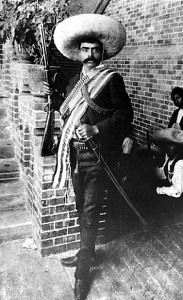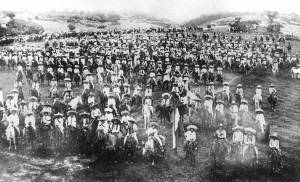Emiliano Zapata 100
April 15, 2019
On April 10, 1919, 100 years ago last week, the Mexican revolutionary Emiliano Zapata was gunned down in Chinameca, a village in the Mexican state of Morelos. Zapata was an important leader of the Mexican Revolution, which began in 1910. Zapata’s main goal was to gain land for the people. He remains an important symbol for many peasants, agricultural workers, and others who struggle against social injustice. Zapata was born on Aug. 8, 1879, in Anenecuilco, Morelos.

Emiliano Zapata, a leader of the Mexican Revolution, died 100 years ago today on April 10, 1919. Credit: AP/Wide World
Zapata led an army of some 5,000 people early in the Mexican Revolution. His forces were part a larger revolutionary army that drove the dictator Porfirio Díaz from power in 1911. Zapata’s fellow revolutionary Francisco Madero then became president of Mexico, but he failed to fulfill promises of land redistribution. Zapata then issued a program of immediate land reform known as the “Plan de Ayala.” (Ayala is a city in Morelos.) Zapata later refused to recognize the authority of Victoriano Huerta, who overthrew Madero in 1913.

The Mexican Revolution of 1910 was a civil war in which Mexicans of various social classes demanded economic, political, and social reforms. This photograph shows a mounted army of farmers and peasants led by revolutionaries Pancho Villa and Emiliano Zapata. Credit: © Hulton Archive/Getty Images
The military leaders Zapata, Venustiano Carranza, Álvaro Obregón, and Pancho Villa rebelled against Huerta—“El Usurpador” (the Usurper)— and drove him from power in 1914. However, these men came from different parts of the country and had various goals and ambitions. Carranza took control of Mexico in 1914, but fighting among the revolutionary leaders continued for several years. On April 10, 1919, Zapata was betrayed and murdered by forces loyal to Carranza. Carranza was then killed in 1920 during fighting with forces loyal to Obregón—who then became president. The war ended and Obregón at last instituted the ideals of the revolution by distributing land to Mexico’s peasants, building many schools, and supporting a strong labor union movement.


